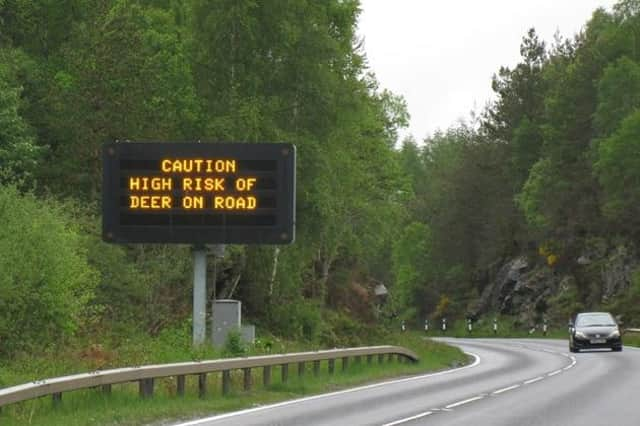Increased risk of deer on Angus roads


With night falling earlier, deer are more likely to venture on to grass verges near roadsides as they browse and feed.
In response to the potential risk, and to safeguard public safety, NatureScot – in conjunction with Transport Scotland and Traffic Scotland – has placed warning messages on electronic variable messaging signs on main routes.
Advertisement
Hide AdAdvertisement
Hide AdDriver on minor roads are also at risk, however, and nature agency NatureScot is warning motorists to drive with care.
There are an estimated 12,000 collisions between deer and vehicles in Scotland per year, resulting in 50 to 100 human injuries. The majority of collisions take place in early evening through to midnight, with another peak occurring from 6am to 9am.
Over the past 50 years, the number of wild deer in Scotland has increased, as has their range. In the same period, the volume of road traffic has almost doubled. This combination has led to increased deer-vehicle collision rates across the country.
Jamie Hammond, NatureScot wildlife management officer, said: "From October to December, deer are more likely to be on the road as they move down to lower ground to find food and shelter. The highest risk is from sunset to midnight and shortly before and after sunrise. Particularly in these peak times, we advise motorists to slow down and watch for deer crossing roads.
Advertisement
Hide AdAdvertisement
Hide Ad"Be aware that if you're driving near woods, deer can suddenly appear before you have time to brake. If you do hit a deer, report it to the police, even if you’re uninjured and your car isn’t damaged, as the deer may be fatally injured and suffering."
Other tips include trying not to suddenly swerve to avoid hitting a deer. A collision into oncoming traffic could be even worse; only braking sharply and stop if there is no danger of being hit by following or oncoming traffic; try to stop as far away from the animals as possible to allow them to leave the roadside without panic – and use hazard warning lights.
Driver should also be aware that more deer may cross, as they often travel in groups.